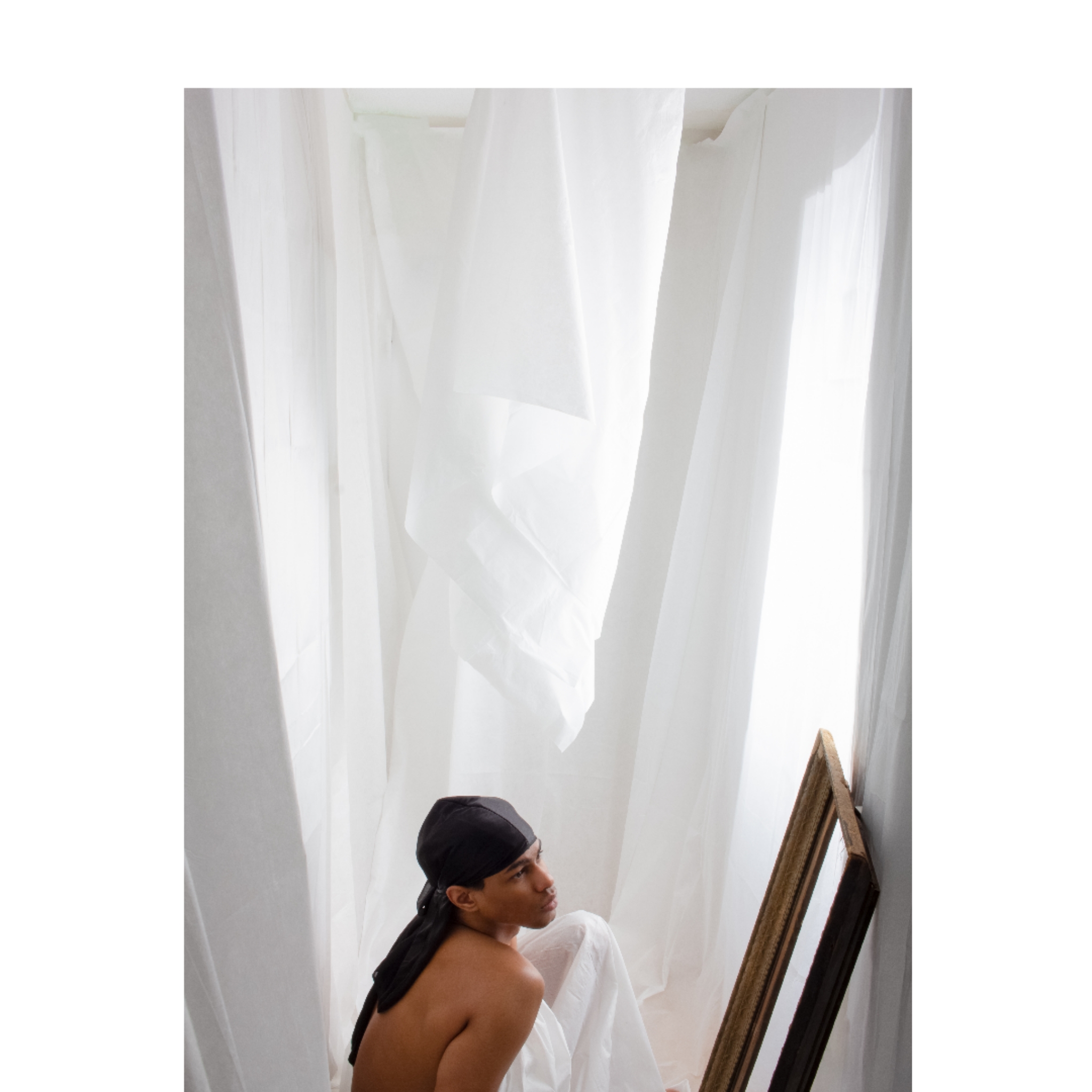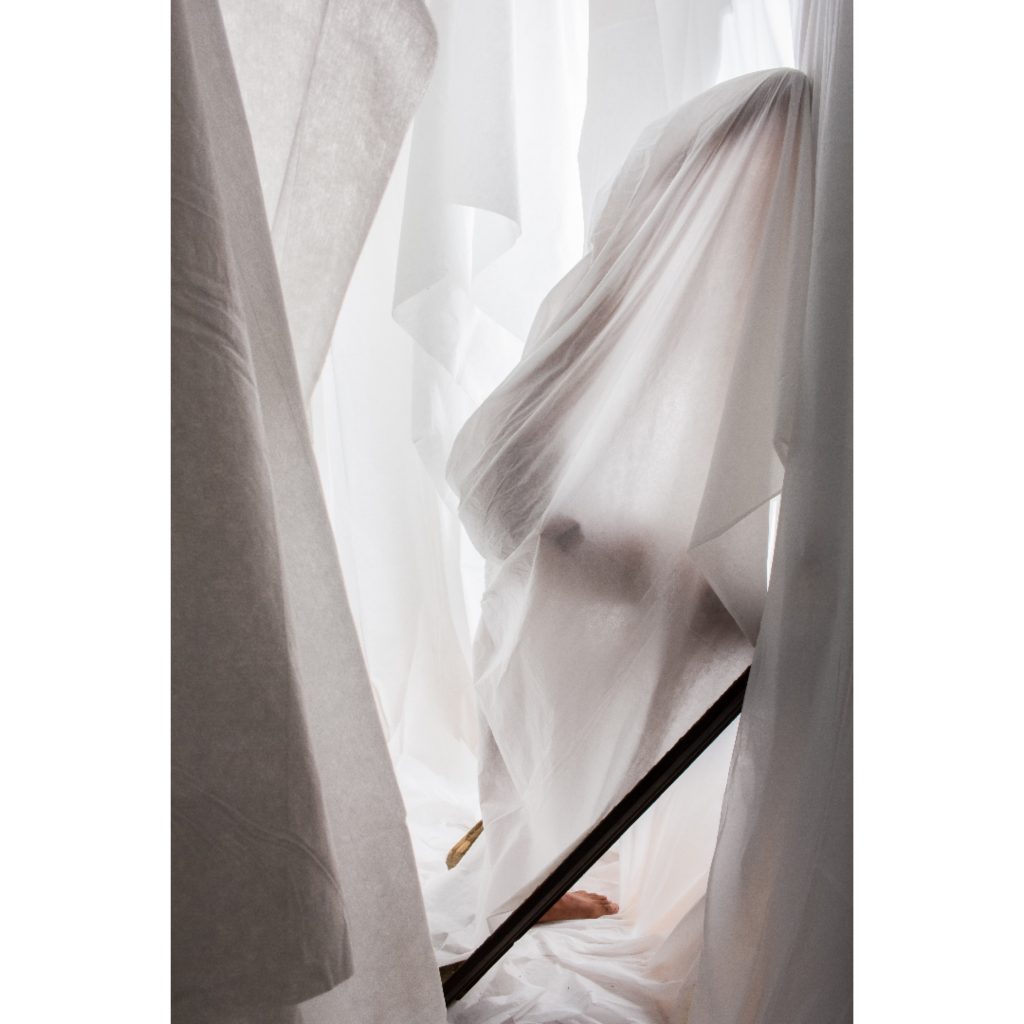Creating during Self-Isolation with Clayton Batson-Creative Connect Mentee
By Alica Hall, p
Posted on June 23, 2020

Physical distancing during COVID-19 has made a significant impact on our way of life, especially for marginalized artists and creatives. While the shutdown has taken a major toll on the mental health and financial opportunities for our creative community, it has also spurred innovation. We’ve made the shift organizationally moving our programming to online virtual courses. Many members of our Creative Connect program—which pairs young emerging Black artists with established Artists and career professionals—have had to find new ways to connect and stay inspired.
Clayton Batson continually provokes his audience to reflect on their own journeys while he exposes his own. Through our Creative Connect program, Clayton worked with photographer and Creative Connect mentor, Nabil Shash which helped him navigate the challenges he was facing during the pandemic. He has now launched a virtual exhibition “Naked Solitude”, which is a photo essay on the need for reflection during these times. This project was completed and inspired by the pandemic, and the unique situation he found himself in.




We talked with Clayton about his artistic journey with this project, how isolation can be a good thing, and what he’s gained from our mentorship program. Read more below:
How did the virtual exhibition come about?
This series that I created came from a poem that I woke up and started writing. At the time I did not know what this poem meant.
It came about because of the quarantine situation. I realized a lot of things would be cancelled and I realized I was going to be alone and it was going to expose me to my own thoughts. I got in a state where I was questioning a lot. Reflecting on what I have done in the past 25 years.
It took a lot of meditation and reflection to regain control and channel my energy into the poem and bringing it to life.
What does the virtual exhibition mean?
The project is me documenting and exploring those moments and what I can take from that to move ahead. Documenting my past and what I learned from my past, taking useful things and beginning to carve out my future. I wanted to merge my writing into my photos. Most of the photos are capturing very pensive states. Naked Solitude was my way of reaffirming that it is okay to be alone and finding ways to get to know yourself better, to love you better and to feel that oneness in yourself.
Why did you want to tell the story of Naked Solitude?
I realized on social media that a lot of people were finding it hard to self isolate. The thought of it was scary. Not everyone was looking at the benefit that this period can bring to them. After I got over my own fears with it, I saw this as a time to really work on myself. Give myself the attention I wasn’t going, I was busy with other things that were not myself.
It was time for me to get down to what I need, what I want, and who I want to be as an artist.
Naked Solitude was my way of looking at myself. Stripping away all the emotions and everything else and finding out who I am outside of the “grind” and hustle. Exploring myself and finding out what my purpose is and where I want to be, outside of what the world wants me to be. It is a marker for me and a reminder and now I had the abundance of time to explore that.
How has mentorship helped you along your creative process?
In the Capture Group Mentorship workshop ( A series of group mentorship sessions organized by Nia Centre through the Creative Connect program that explored photography and lighting techniques), with Nabil, I learned to use the resources that I have and make it work. At first, when it came to lighting, my idea was to block off all lighting and create my own light. I learned no, I can use the natural light that is available, add to it, adjust it no matter how bright or dark it is to achieve whatever I want.
Some photos I did were done with only natural light and some were a blend of it.
Looking at Nabil’s work, I realized that he shoots in small spaces. After this workshop, I came home and looked at my space and I realized… I have enough space. You really don’t have to have so much space to create something. I went to the dollar store, I got a drop sheet and just placed it over everything.
I looked at my hallway differently and used a drop sheet to make the space bigger. He inspired a lot of ways I think of space. I don’t need to rent out a warehouse to get the space that I want. I can simply use the space that I have, move things around and make that work. I can use drop sheets, canvas and make a production. Learning that made me want to create more. And instead of being stuck on the fact that I don’t have people, I decided to use what was available to me. I’m the artist, so I figured why not just use me.
I never thought that I would use a self- portrait, never. But when social distancing came around, I knew I needed to get these photos done and not wait. I started doing self- portraits and I loved it.
I am constantly on Nabil's page trying to figure out what type of lighting he uses for his photos. Was he by a window? What did he use to get that light? Getting to watch him during these sessions, it was just so eye opening. We were on the top floor and there were things all about and we had to figure out how to frame things and use what we want. I am constantly using his work and work methods as my inspiration in my own work.
How did you document ‘Naked Solitude’?
So I played all the hats. I was the Creative Director, Model, Photographer, Editor. I got this shutter release from Amazon for 10 dollars and I had it on a two second timer. I had two seconds to get the photo. In some photos, you can’t see it, but I was holding the remote. I had to find two seconds to figure out what I was going to do with this shutter release. Hide it or throw it to the side, and then go into my pose.
The planning took months but I gave myself 2 days to shoot. I did the editing. So I used painters tape to hold the drop sheet and because I wanted to get the high walls and show that, I had to edit that out. In some photos, I had to increase the contrast so I could get more of the white and me showing- adjusting the brightness of the light.
What motivated you to use the writing pieces in the final product of the exhibition?
I included some of the writing that I did from my first exhibition I did with Nia Centre and G44. Poems always come to me and in that first exhibition, I decided to write poems over the photos that I took. It was something that captured everyone's attention that I was able to have these things parallel and in conversation with each other. I wanted to show the correlation of the photos and the poems and also give you the mood of where the photos came from.
What do you want this work to represent? What is the legacy of this work?
For me, this is a marker. When I look back at this, I want to remember that during this pandemic, I realized that I wanted to do this for the rest of my life. Yes, I may get busy doing the mundane things in life, but I still need to remember my purpose here. I am a creator, I am an artist, so what am I doing. I am always going to be moving and working, but I need to remember my purpose.
Naked Solitude is ongoing. This is the first lens. It is a reminder to keep adding on no matter what moments we are in life.
Whats words would you give someone who may be hesitant to begin mentorship and find a mentor?
My experience at Nia, with all the mentors I have met, from Ebti Nabag ( photographer) and Nabil, I never felt like that hesitation to just speak to them like a normal human being. They never made me feel smaller and we always connected on that artist level. It was organic.
My advice I would give is to not get intimidated by the level of work that they do or place that they are in. Try to focus on who they are as an artist. Focus on what you admire from them and what you want to learn from them. Aim to connect with them on an artist, human level and not on a superficial level. That is more useful for you as an artist. If you focus on what you want from the relationship. For me, I wanted to learn, I wanted to make my work better, I wanted to see how they work and what I could emulate from them. Luckily I have had a lot of humble mentors.
What would you say is the value of mentorship today?
It adds value to your own life when you have mentors. It is someone that you can look up to and begin driving yourself forward to emulate techniques, success etc.
Anybody can be a mentor. Going into these workshops, these mentorship sessions, I am going in to learn. You can mark those people who are adding value to your work.
For example, Ebti’s workshop on Building your Routine. I always wondered how artists manage to have so many jobs and still put out their individual works. Through this isolation process, and hearing Ebti speak about it, I was able to implement some of her methods. I now have more time, because I learned to carve my time better. Looking at how Ebti works helped me to better manage my time.
Having a mentor helps you as an emerging artist gets to where you want to be.
Follow Clayton on Instagram to see his full series of “Naked Solitude”
Learn more about Creative Connect and become participant! Sign Up Here
Copyright © 2025 Nia Centre for the Arts All Right Reserved.